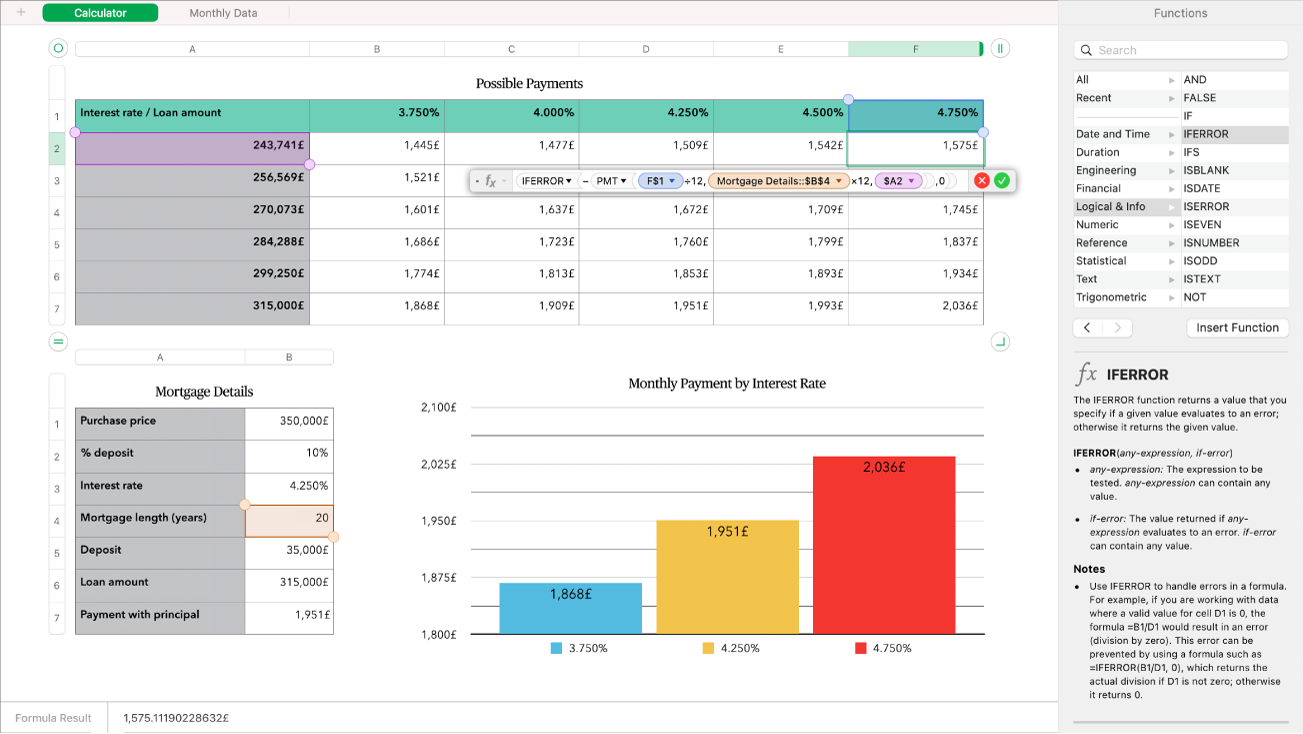Formulas and Functions Help
- Welcome
-
- ACCRINT
- ACCRINTM
- BONDDURATION
- BONDMDURATION
- COUPDAYBS
- COUPDAYS
- COUPDAYSNC
- COUPNUM
- CUMIPMT
- CUMPRINC
- CURRENCY
- CURRENCYCODE
- CURRENCYCONVERT
- CURRENCYH
- DB
- DDB
- DISC
- EFFECT
- FV
- INTRATE
- IPMT
- IRR
- ISPMT
- MIRR
- NOMINAL
- NPER
- NPV
- PMT
- PPMT
- PRICE
- PRICEDISC
- PRICEMAT
- PV
- RATE
- RECEIVED
- SLN
- STOCK
- STOCKH
- SYD
- VDB
- XIRR
- XNPV
- YIELD
- YIELDDISC
- YIELDMAT
-
- AVEDEV
- AVERAGE
- AVERAGEA
- AVERAGEIF
- AVERAGEIFS
- BETADIST
- BETAINV
- BINOMDIST
- CHIDIST
- CHIINV
- CHITEST
- CONFIDENCE
- CORREL
- COUNT
- COUNTA
- COUNTBLANK
- COUNTIF
- COUNTIFS
- COVAR
- CRITBINOM
- DEVSQ
- EXPONDIST
- FDIST
- FINV
- FORECAST
- FREQUENCY
- GAMMADIST
- GAMMAINV
- GAMMALN
- GEOMEAN
- HARMEAN
- INTERCEPT
- LARGE
- LINEST
- LOGINV
- LOGNORMDIST
- MAX
- MAXA
- MAXIFS
- MEDIAN
- MIN
- MINA
- MINIFS
- MODE
- NEGBINOMDIST
- NORMDIST
- NORMINV
- NORMSDIST
- NORMSINV
- PERCENTILE
- PERCENTRANK
- PERMUT
- POISSON
- PROB
- QUARTILE
- RANK
- SLOPE
- SMALL
- STANDARDIZE
- STDEV
- STDEVA
- STDEVP
- STDEVPA
- TDIST
- TINV
- TTEST
- VAR
- VARA
- VARP
- VARPA
- WEIBULL
- ZTEST
- Copyright

Formulas overview

A formula performs calculations using specific values you provide and displays the result in the cell where you place the formula.
For example, in the bottom cell of a column, you can insert a formula that sums the numbers in all the cells above it. If any of the values in the cells above the formula cell change, the sum displayed in the formula cell is updated.
The values used in a formula can be values you type into the formula, or values that reside in other table cells, which you identify using cell references.
Formulas use operators and functions to perform the calculations. An equal sign (=) always precedes a formula.
Examples
This formula uses the operator + to add two values:
=A2+16
A2 is a cell reference. (A2 refers to the second cell in the first column.)
+ is an arithmetic operator that adds the value that precedes it with the value that follows it.
16 is a constant.
This formula uses the SUM function to add the values in a range of cells:
=SUM(A2:A10)
SUM is a function that returns the sum of the arguments to the function.
A2:A10 is a cell reference that refers to the values in cells A2 to A10 (nine cells in the first column) and is the argument passed to the function. SUM returns the sum of any numbers included in these cells.
To learn more about functions, see Functions overview. For specific instructions on how to accomplish tasks in Numbers, Pages or Keynote, see the user guide for that app.